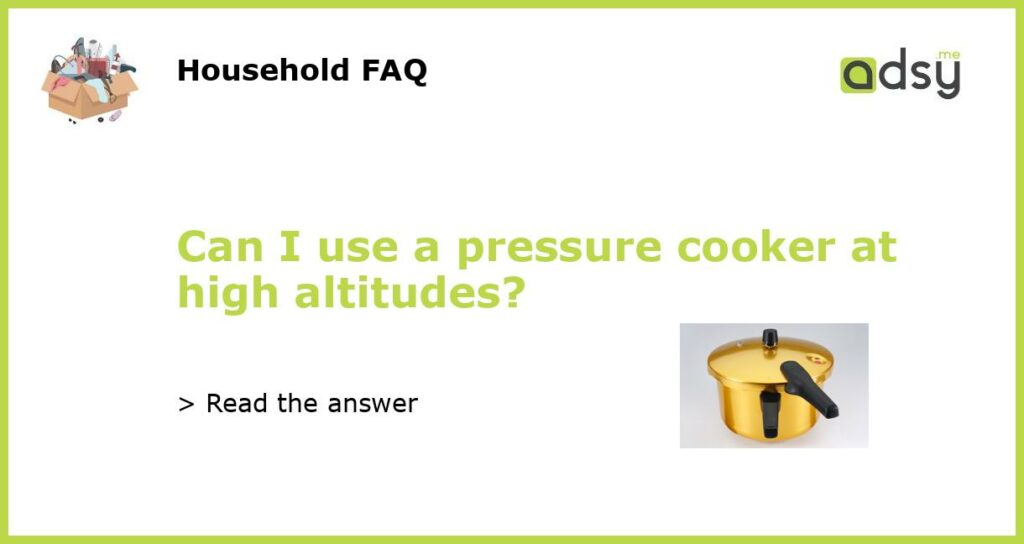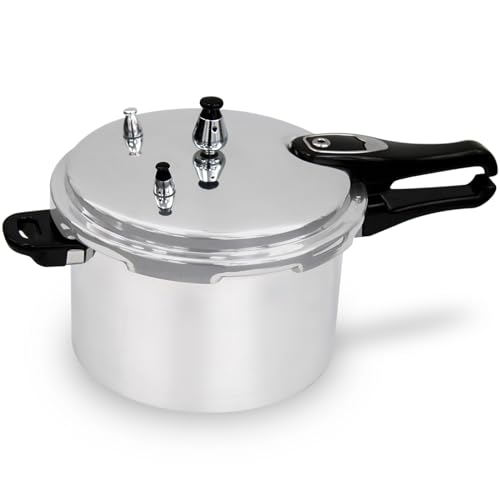Yes, you can use a pressure cooker at high altitudes
Using a pressure cooker at high altitudes can be a bit more challenging than at sea level because the boiling point of water is lower at higher elevations. This means that food may take longer to cook, and the pressure cooker may need some adjustments to function properly. However, with a few modifications, you can still enjoy the benefits of using a pressure cooker at high altitudes.
Understanding the challenges of cooking at high altitudes
At higher altitudes, the atmospheric pressure decreases, which in turn lowers the boiling point of water. This means that water boils at a lower temperature, making it more difficult to cook certain foods properly. Since pressure cooking relies on the formation of steam to increase the internal pressure and raise the boiling point of water inside the cooker, this lower boiling point can affect the cooking time and results.
Modifications for pressure cooking at high altitudes
To account for the lower atmospheric pressure at high altitudes, there are a few modifications you can make when using a pressure cooker:
1. Increase the cooking time: Since water boils at a lower temperature, food may take longer to cook in a pressure cooker at high altitudes. You may need to increase the cooking time by around 5-10% to ensure that the food is properly cooked. Keep a close eye on the cooking process and use a thermometer to check the internal temperature of the food to ensure it reaches a safe level.
2. Adjust the pressure release method: Some pressure cooker models have different pressure release options, such as quick release and natural release. Quick release involves manually releasing the steam immediately after cooking, while natural release allows the pressure to release gradually on its own. At high altitudes, it is generally recommended to use the natural release method to allow the food to fully cook and avoid any potential safety issues.
3. Use altitude-adjusted cooking times: Many pressure cooker manufacturers provide altitude-adjusted cooking time charts or guidelines. These guidelines take into account the specific altitude you are cooking at and provide recommendations for adjusting the cooking time. Refer to these charts or guidelines for precise instructions on how to modify the cooking time for your specific altitude.
Tips for successful pressure cooking at high altitudes
Here are some additional tips that can help ensure successful pressure cooking at high altitudes:
1. Precook certain ingredients: If you’re cooking a dish that includes ingredients that require longer cooking times, such as root vegetables, it can be helpful to precook them partially before adding them to the pressure cooker. This can help ensure that the ingredients are fully cooked by the end of the pressure cooking process.
2. Experiment and adjust: Cooking at high altitudes can be a bit of trial and error, as the specific altitude and conditions can vary. It may take some time to find the right adjustments for your pressure cooker and recipes. Keep notes of the modifications you make and the results you achieve, so you can refine your cooking methods over time.
3. Follow the manufacturer’s instructions: Always refer to the manufacturer’s instructions for your specific pressure cooker model. They may provide additional recommendations or considerations for cooking at high altitudes.
While using a pressure cooker at high altitudes may require some adjustments, it is still possible to achieve great cooking results. By understanding the challenges, making the necessary modifications, and following the manufacturer’s instructions, you can confidently use a pressure cooker at high altitudes and enjoy the convenience and efficiency it offers.






